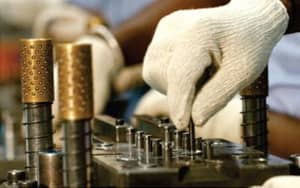When you look around the office, you probably see traditional attire, somewhat adhering to stereotypes. This post is a call for changing current perceptions to that women can feel empowered and professional altogether.
Fashion in the workplace
Fashion in the workplace is a very common thing. In the late 60’s, it was frowned upon if a woman wasn’t wearing high-heels, a tight dress, and a light amount of make-up. In a male dominated world, oh how this has changed since the 60’s, and frankly, for the better.
Whilst some businesses still demand a certain ‘office attire’ within their organisation, fortunately, with freedom of thinking, autonomy in decision-making and owning your job, we now have much more freedom and control over what we wear to work.
This forward-thinking and more fluid approach has not only increased our creativity in how we dress for work, it’s challenged traditional stereotypes, perhaps creating new ones in the process.
It is worth noting, however, there is still a psychology of fashion within the workplace – black dresses, Oh Kate high heels and blazers in a large proportion of businesses still supports the psychology of power, seniority and leadership. Black is a colour constantly connoted with seniority in the business world; acting as a professional patriarch of what it means to be a businessman or businesswoman. Furthermore, if you can rock a pair of Louboutin’s Oh Kate high heels, you’re really the statement woman within the organisation.
Challenging the status quo and office fashion
However, what’s culturally ‘the norm’ now doesn’t mean it can’t be challenged to develop the future, and this is already happening. Unfortunately, if you search for ‘casually dressed female leaders’ you won’t find much in the way of anything unique than what you’d expect, but thanks to creative agencies in marketing, advertising and technology, and especially within Silicon Valley, we are now free to dress in what’s comfortable for us, not the organisation.
This is two-fold; what makes us comfortable, makes us perform better; therefore, if you feel like wearing a Kuma Design butterfly brooch and a pair of canvas Vans, you should feel empowered to do so. In fact, the theory behind dressing the way you want, is that by empowering the employee to wear what they wish, they can be their highly-performing, creatively confident true self, which in turn, improves business productivity and performance. However, this is only one part of an approach to improving employee engagement that HR teams are using across the board.
The second point is that by giving choice, organisations are placing the autonomy and mastery aspects of what it means to be ‘led’ by them in our own hands – giving us the warm feeling that we own important aspects our career and working lives.
The future for office dress codes
Over the past three years there has been a seismic shift in the norms of what’s right and wrong; from sexuality, to discrimination in the workplace, and this is only going to extend more and more as the next generation continues to challenge facts with opinion.
With that being said, it is with opinion, that 40% of millennials coming into the workplace are inspired by Mark Zuckerberg’s dress sense. The question is – are office dress codes still going to be a thing in the future?
The trend suggests perhaps not, or at least diversions of dress codes for more formal workplaces will be a common thing. But for the average workplace, dressing to suit yourself rather than work will become the social norm.






Leave a Comment